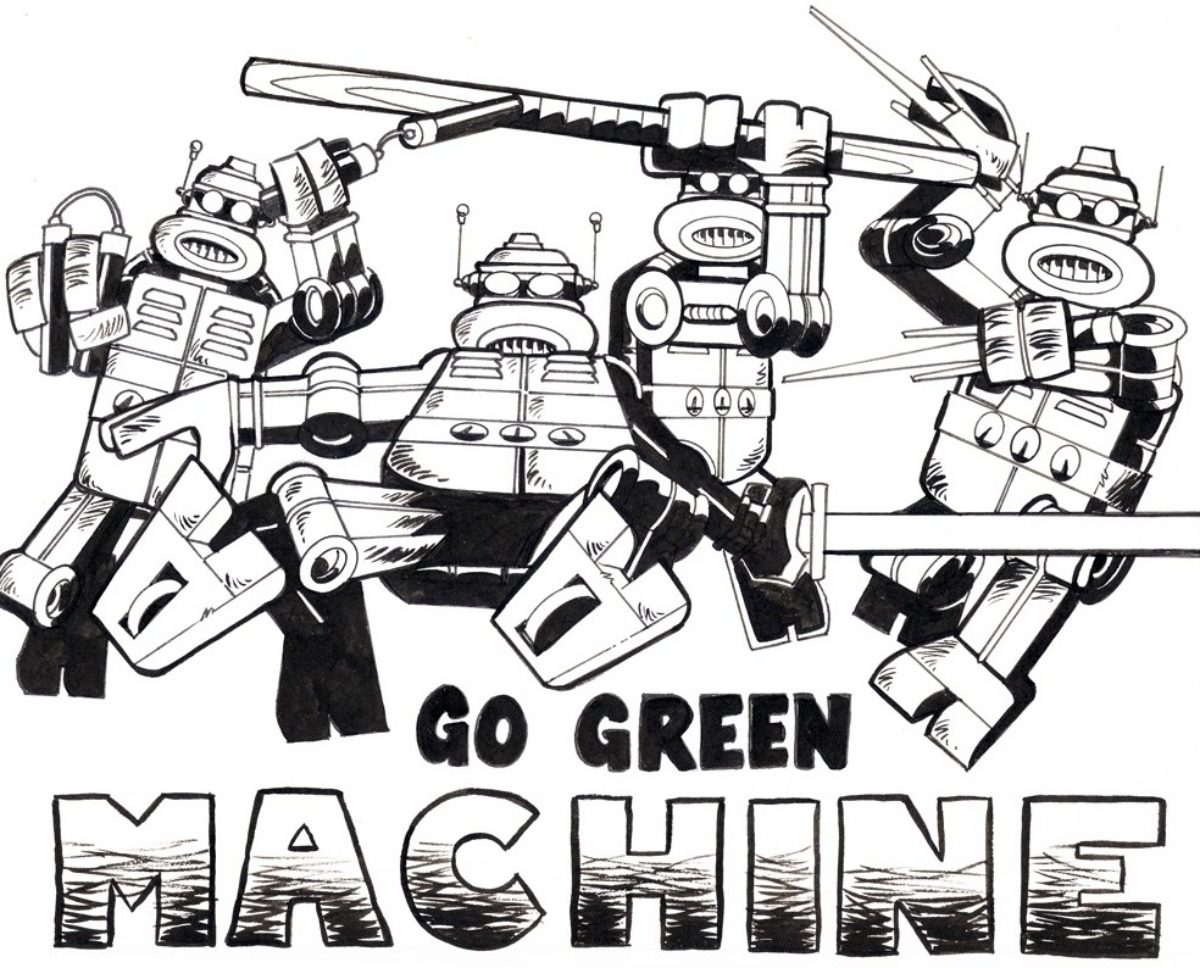
For those of you who do not already know, I am a SUCKER for Pre-Mirage work by Kevin and Peter. I feel the work that the two of them did prior to Mirage serves just as much historical merit as any of the TMNT work does.
Now, prior to the TMNT, and even prior to Gobbledygook #1, Kevin and Peter did some work for Clay Geerdes’ “Comix Wave” (also known and “Comix World”…Clay is pictured above with Kevin), and Brad W Foster’s “Goodies”. Comix Wave and Goodies are often credited as Kevin’s first works. These books were known as Mini-Comics. What is a Mini-Comic? Let’s ask Wiki! (Skip the quoted part if you dont care…it is kind of a long read):
A minicomic is a creator-published comic book, often photocopied and stapled or with a handmade binding. In the United Kingdom and Europe the term “small press comic” is equivalent with minicomic reserved for those publications measuring A6 (105 mm × 148 mm) or less. See also: British small press comics
These are a common inexpensive way for those who want to make their own comics on a very small budget, with mostly informal means of distribution. A number of cartoonists have started this way and gone on to more traditional types of publishing, while other more established artists continue to produce minicomics on the side. Comparable with indie music the phenomenon shares equal ideas about autonomy of the artist because of the DIY aspect. Minicomics can be even less mainstream than alternative comics.
The term was originally used in the United States and has a somewhat confusing history. Originally, it referred only to size: a digest comic measured 5.5 inches wide by 8.5 inches tall, while a minicomic was 5.5 inches by 4.25 inches. There is not really a standard format. Anything between regular comic book size to even the size of a stamp can be a mini book. Most books have uncommon sizes for easthetical reasons or are often connected to graphic design and book print tricks to make it look good. Most of these sizes were convenient for artists using standard office supplies: a US letter page could be folded in half to make a digest, or in quarters for a minicomic. These comics were generally photocopied, although some that were produced in larger quantities used offset printing. An early and unusually popular example of this minicomic format was Matt Feazell’s Cynicalman, which began in 1980 or Alfred Huete’s award winning ‘DADA’ mini. (The earliest and most popular comics in mini- and digest sizes—predating not only the term minicomic, but even the standard comic-book format—were the anonymous and pornographic Tijuana bibles of the 1920s.)
Currently, the term is used in a more general sense which emphasizes the handmade, informal aspect rather than the format. By this loose definition, a single photocopied page folded in quarters would still be a minicomic, but so would a thicker digest-sized comic, or even a large, elaborate, and relatively expensive photocopied booklet with a silkscreened cover. Even some professionally printed and bound booklets are referred to as minicomics, as long as they are published by the artist and marketed in minicomic venues, but this usage is controversial.
In North America and the United Kingdom, minicomics are currently rare in traditional “direct market” comic-book stores; they are often sold directly by the artist at book fairs or through the mail, ordered from websites, or handled by small bookstores and distributors that carry zines. In terms of production and distribution issues and their audience, minicomics—of all of the sizes and types mentioned above—have much more in common with each other, and with zines, than with any traditionally published comics; this may be the reason why the meaning of the term has shifted. In Europe many specialized comic books stores have a special little corner dedicated to the odd off size little self-printed books. On comic book conventions, such as the one in Angouleme, there are large markets where the little books are available. Because most of the books are rather cheap and rare, it has become a collecting target.
Minicomics typically have no editorial oversight, and both their content and quality varies over a huge range. Many of the creators of minicomics do not expect to make a significant amount of money, or even cover their costs, with the price they charge for their comics. These creators may see minicomics as a way to hone their skills or as a way to get their work seen by a larger audience, or may be drawn to the format for aesthetic reasons. Some observers have anticipated that the rise of webcomics would be the end of minicomics, but as of 2005 this does not appear to be the case.
Still with me? GOOD! Amazingly, I was recently able to obtain quite a few of these books. Now I will warn you, 99% of these books were of a graphic adult nature, and while I have heavily censored the following images, you should be atleast 18 years of age or older to click any of these links. Also, because most of the art in these books is very graphic, I have only include pages by either Kevin or Peter. Most of the pages are in order, some of them are not…because photobucket is dumb like that.
I hope you enjoy the historical art!
Bad Girl Art 3 (Cover by Kevin Eastman. Check out how he signed it!)
Comix Wave 13 (“Champ” Story by Kevin and Quentin Eastman. This story also appears in GobbledyGook #1)
Goodies 5 (Sneak Attack by Kevin Eastman)
Goodies 8 (SlayDream by Peter Laird)
Goodies 12 (The Man with the Growin’ Touch by Kevin Eastman. Credited as “Brooks”)
Hostiler Humor (Various Satirical Ads by Kevin Eastman)
Sweet Cheeks (Cover by Kevin Eastman)
Sweet Cheeks 4 (Cover by Kevin Eastman)

thanks for the upload, that’s interesteing to see kevin and peter’s old work
:O